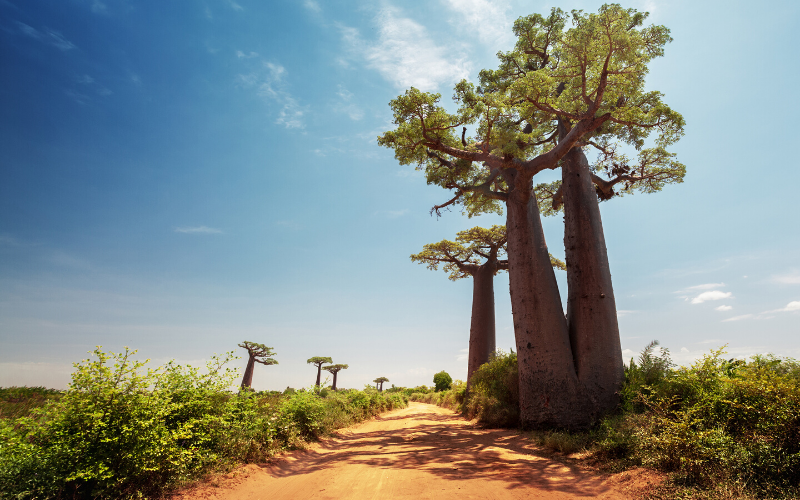Another one of Africa’s many mysteries. For about ten years now, some of the biggest and oldest trees on the continent, the baobabs, have been dying. Plants between 1,100 and 2,500 years old are disappearing. In particular, nine of the thirteen oldest baobabs on the continent have collapsed under their weight and have died in the last 10 years. It is shocking to think that during our lifetime so many thousand year old trees have disappeared at the same time.
Among them, the oldest, in Zimbabwe, was about 2,500 years old. The largest, instead, was the Holboom in Namibia, which was 100 feet tall and 115 large.
Why Are the Baobabs Disappearing?
A group of researchers at the University of Babes-Bolyai in Romania tried to answer this question in a study published in Nature Plants.
The direct cause of tree death is unclear. But it could be at least partly associated with significant variations in climatic conditions in southern Africa. However, the researchers believe that we need further research to support or disprove this assumption.
Between 2005 and 2017, researchers surveyed and dated virtually all known large African baobabs. In total, they analyzed about 60 baobabs, distributed among Zimbabwe, Namibia, South Africa, Botswana and Zambia. They collected data on circumference, height, wood volume and age. They also recorded that many of the largest and oldest trees died during the study period.
A Millennial Shelter
The baobab is a strange-looking plant, with branches similar to gnarled roots stretching towards the sky. It is no coincidence that some African legends say they fell from the sky, because their roots are upwards and their foliage is under the ground. Sacredness is also linked to longevity. They live many hundreds of years, perhaps even up to 3,000 years.
Many specimens have hollow trunk. In Zimbabwe there is one so big that it can host 40 people inside. In fact, according to legends, there were shops, prisons, houses, warehouses inside them. Today, however, they are mostly a shelter from the heat for many animals.
In addition, this plant also has food uses. In fact, it is possible to boil and eat the leaves, and even use them in the traditional medicine. The bark, furthermore, is perfect for getting ropes, baskets and clothes.
The baobabs, finally, are extremely resistant. They can be deprived of the bark or wrapped by the flames of a fire without being affected by it. All this makes the death of the baobabs even more surprising and waiting for an explanation.

